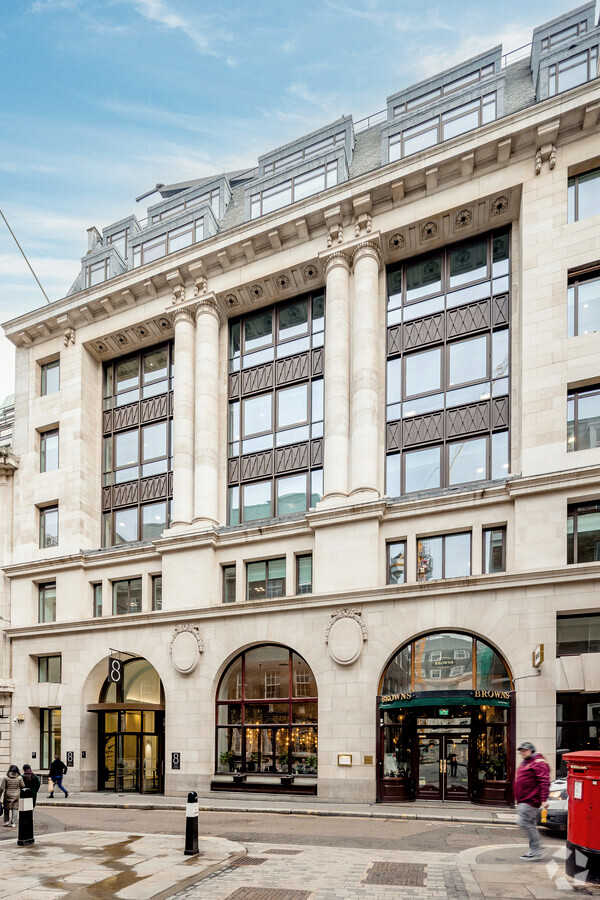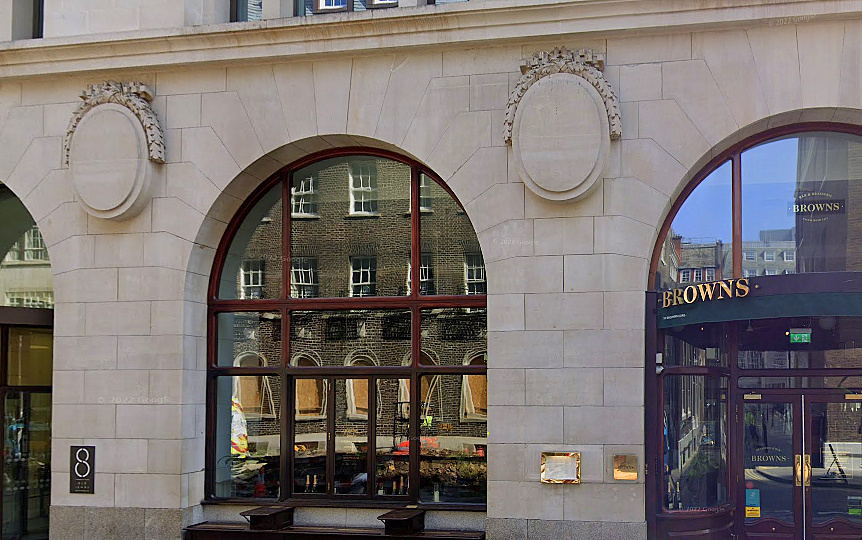8-10 Old Jewry, EC2
Built: 1930-31
Architect: George Vickery, T.S. Vickery, John James Joass
Location: Old Jewry
Listing: not listed

Before the creation of Princes Street and the southward extension of Moorgate, the main N-S axis in this portion of the City consisted of Coleman Street and Old Jewry. The latter two now appear as relatively narrow lanes but retain considerable architectural interest. The building considered here was constructed on behalf of the Commonwealth Bank of Australia. Occupying three smaller, pre-existing plots, it is an irregular quadrilateral, terraced on two sides. The rear, ‘service’ elevation is plainly composed and with utilitarian white tiling, with all the architectural effort being concentrated on the façade.
This principal aspect counts three large central window bays and two narrower lateral ones. The ground floor is very subtly rusticated, with double-height ceiling and arcuated openings in the central bays. The mezzanine storey constitutes a pedestal for the three-storey colossal Doric order above. The latter consists of two sets of paired columns, with the lateral bays forming antae. The terminating entablature consists of a plain architrave and cornice, with the frieze merely implied. Bronze floor panels/spandrels and metal-framed windows span the interstitial space that, in common inter-war practice, substitutes for ashlar. There are a further attic and two mansard storeys which are only visible from Frederick’s Place.

The composition of the façade gracefully combines two architectural tendencies in the City of the time: conservative retention of a Classical idiom and a more ‘modern’ avoidance of abundant detail. Small-scale carving and elements are limited to festooned cartouches (ground floor), the neck of the capitals, the soffit of the architrave and little else. We note, for instance, an absence of framing around windows. Together with the bronze panels so popular in the interwar period, the spareness of composition marks a clear departure from more demonstrative Edwardian precedent without forgoing imposing scale and an element of refinement.
The Commonwealth Bank of Australia has a more complex history than that of most other banks from the former dominions. It was founded in 1911 by the Australian government, then led by the Labour Party, to promote more widespread access to banking services. Among its distinctions is that it was authorised to conduct both ‘savings bank’ and ‘general banking’ services and was the first Australian bank to benefit from a guarantee from the federal government. It also had an arrangement with the Post Office to operate through its numerous branches. Furthermore, in 1920 it took on some central banking functions (such as the production of currency) from the Department of the Treasury. A number of takeovers and mergers as well as organic expansion followed. The central and commercial banking roles were only separated in 1959, with the creation of the Reserve Bank of Australia as the central bank. Thereafter, Commonwealth Bank of Australia became a regular commercial bank and was eventually privatised in 1996. Almost immediately after being founded, the bank established a branch in London, being located on New Broad Street from the 1910s until it moved to this purpose-built edifice on Old Jewry.

